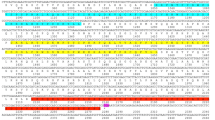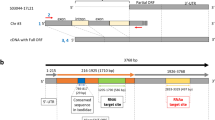Abstract
The rapid development of new genetic tools has boosted the gene discovery machinery. RNA interference (RNAi), a gene silencing process, has been recently used in several eukaryotic organisms to elucidate the function(s) of unknown genes and biochemical pathways. We used the dsRNA technique in Amlyomma americanum female ticks to test the applicability of the RNAi approach in ticks. Incubation of tick salivary glands (TSGs) in vitro and in vivo injection into whole female ticks with histamine binding protein (HBP) dsRNA led to a reduction in the HBP transcripts in the dsRNA treated groups. The dsRNA-injected ticks had a profound difference in their feeding pattern compared to control ticks that might reflect an increase in local histamine concentrations at the feeding sites. To our knowledge, this is the first RNAi study in ticks. In conclusion, RNAi can be applied in ticks and might be used to test the function of key proteins crucial for avoiding host defense at the tick-host interface.
Similar content being viewed by others
References
Aljamali, M.N. et al. 2002. Identity and synthesis of prostaglandins in the lone star tick, Amblyomma americanum (L.), as assessed by radio-immunoassay and gas chromatography/ mass spectrometry. Insect Biochem. Mol. Biol. 32: 331-341.
Bergman, D.K. et al. 2000. Isolation and molecular cloning of a secreted immuno-suppressant protein from Dermacentor andersoni salivary glands. J. Parasitol. 86: 516-525.
Bernstein, E. et al. 2001. Role for a bidentateribonuclease in the initiation step of RNA interference. Nature 409: 363-366.
Bior, A.D. et al. 2002. Comparison of differentially expressed genes in the salivary glands of male ticks, Amblyomma americanum and Dermacentor andersoni. Insect Biochem. Mol. Biol 32: 645-655.
Bowman, A.S. et al. 1996. Tick salivary prostaglandins: presence, origin and significance. Parasitol. Today 12: 388-395.
Elbashir, S.M. et al. 2001. Functional anatomy of siRNAs from mediating efficient RNAi in Drosophila melanogaster embryo lysate. EMBO J. 20: 6877-6888.
Fire, A. et al. 1998. Potent and specific genetic interference by double-stranded RNA in Caenorhabditis elegans. Nature 391: 806-811.
Francischetti, I.M.B. et al. 2002. Ixolaris, a novel recombinant tissue factor pathway inhibitor (TFPI) from the salivary glands of the tick, Ixodes scapularis: Identification of factor X and factor Xa as scaffolds for the inhibition of factor VIIa/tissue factor complex. Blood 99: 3602-3612.
Grishok, A. et al. 2001. Genes and mechanisms related to RNA interference regulate expression of the small temporal RNAs that control C. elegans developmental timing. Cell 106: 23-34.
Gutierrez, J.A. 2000. Genomics: from novel genes to new therapeutics in parasitology. Int. J. Parasitol. 30: 247-252.
Gutteridge, W.E. 1997. Designer drugs: pipe-dreams or realities. Parasitology 114: S145-S151.
Hammond, S.M. et al. 2000. An RNA-directed nuclease mediates post-transcriptional gene silencing in Drosophila cells. Nature 404: 293-296.
Hannon, G.J. 2002. RNA interference. Nature 418: 244-251.
Kuwabara, P.E. and Coulson, A. 2000. RNAi-prospects for a general technique for determining gene function. Parasitol. Today 16: 347-349.
Nykänen, A. et al. 2001. ATP requirements and small interfering RNA structure in the RNA interference pathway. Cell 107: 309-321.
Paesen, G.C. et al. 1999. Tick histamine-binding proteins: isolation, cloning, and threedimensional structure. Mol. Cell 3: 661-671.
Paesen, G.C. et al. 2000. Tick histamine-binding proteins: lipocalins with second binding cavity. Biochim. Biophys. Acta 1482: 92-101.
Patrick, C.D. and Hair, J.A. 1975. Laboratory rearing procedures and equipment for multihost ticks. J. Med. Entomol. 12: 389-390.
Plasterk, E.H.A. 2002. RNA silencing: the genome's immune system. Science 296: 1263-1265.
Sangamnatdej, S. et al. 2002. A high affinity serotonin-and histamine-binding lipocalin from tick saliva. Insect. Mol. Biol. 11: 79-86.
Taylor, M.A. 2001. Recent development in ectoparasiticides. Vet. J. 161: 253-268.
Valenzuela, J.G. et al. 2002. Exploring the Sialome of the tick vector of Lyme disease, Ixodes scapularis. J. Exp. Biol. 205: 2843-2864.
Author information
Authors and Affiliations
Rights and permissions
About this article
Cite this article
Aljamali, M.N., Sauer, J.R. & Essenberg, R.C. RNA Interference: Applicability in Tick Research. Exp Appl Acarol 28, 89–96 (2002). https://doi.org/10.1023/A:1025346131903
Issue Date:
DOI: https://doi.org/10.1023/A:1025346131903




